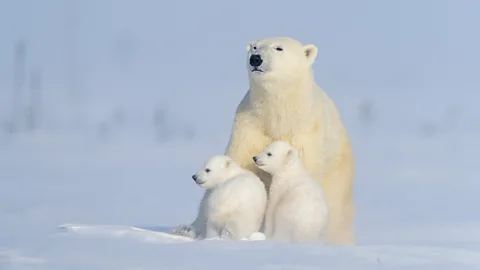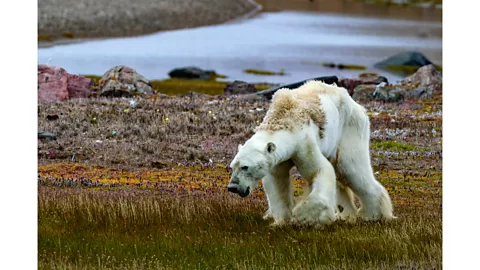Why polar bears are no longer the poster image of climate change
 Getty Images
Getty ImagesFor decades distressed polar bears on distant ice caps were an emblem for climate change – until experts began to doubt the effectiveness of these visuals.

In a derelict hunting camp in the Baffin Islands, Northern Canada, photographers Cristina Mittermeier and Paul Nicklen watched in horror as a polar bear took what were likely its last steps.
With mangey, discoloured fur and a gaunt frame the bear dragged its feet, taking slow and laboured movements. At one point, it paused, to scavenge for food in an abandoned barrel – chewing on the foam seat of a snowmobile, which had been burned and tossed away.
"It was so heartbreaking to watch this animal, probably in its last few minutes of life," said Mittermeier, who shot what would later become one of the decade's most viral – and controversial – polar bear images.
In December 2017, her image, and Nicklen's accompanying video footage, were published in National Geographic Magazine, overlaid with subtitles suggesting: "This is what climate change looks like". The scene in the Baffin Islands became a sensation, quickly clocking up an estimated 2.5 billion views, and fuelling a global discussion about the threat of melting ice caps and global warming.
Images of distressed polar bears clinging to ice floes or in far-flung Arctic landscapes have become instantly recognisable as emblems for the climate crisis. However, over the last decade, scientists, campaigners and news desks have begun to drift away from these visuals, questioning if they really paint a realistic image of climate change.
 Cristina Mittermeier/ SeaLegacy
Cristina Mittermeier/ SeaLegacyImagery that was once hauntingly attention-grabbing was criticised for being too distant, unrelatable and devastating, prompting a call for more diverse representations of climate change. Popular media began to shift away from these iconic photos, opting instead for images of extreme weather, such as heatwaves, droughts and typhoons, which emphasise an issue far closer to home.
Although experts are in agreement that ice caps are melting at record rates, some have warned that images of distressed polar bears might not tell the full story.
Sea ice concentrations have declined by 13% each decade since 1979 due to increasing global temperatures. In 2023, sea ice in Antarctica is well below any previous recorded winter level – a benchmark that the National Snow and Ice Data Center recently termed "mind blowing".
